Growing trees is one of the most rewarding gardening experiences, especially when you start from seeds. Among tropical trees, the tamarind tree (Tamarindus indica) stands out for its beauty, shade, and the tangy fruit it produces. The idea of planting not just one or two, but 100 tamarind seeds might sound ambitious—but it’s also exciting, educational, and deeply satisfying.
In this post, inspired by the YouTube video “Planting Tamarind Tree from 100 Seeds – My Family Projects,” we’ll walk through the complete process—from collecting seeds to nurturing saplings—and explore how this simple gardening project can become a meaningful family experience.
Why Choose Tamarind?

Before we dive into the planting process, it’s worth understanding why tamarind is such a great choice for a long-term project:
- Versatile Fruit: Tamarind pulp is used worldwide in cooking—whether in curries, chutneys, sauces, or refreshing drinks.
- Shade and Beauty: The large, umbrella-shaped canopy of a mature tamarind tree provides excellent shade and adds a lush tropical look to your garden.
- Long Lifespan: Tamarind trees can live for more than a hundred years, making them a true legacy tree for generations to enjoy.
- Resilient and Drought-Tolerant: Once established, tamarind trees are hardy and can thrive in poor soils and dry conditions.
Step 1: Collecting and Preparing Tamarind Seeds
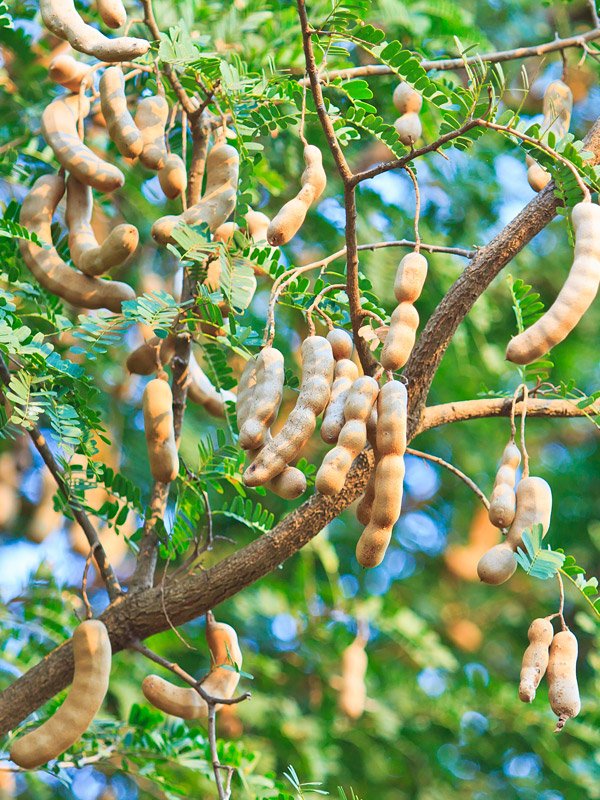
To begin your tamarind-growing journey, you’ll need fresh seeds. You can collect them from ripe tamarind pods or buy them from a local market. The key is to make sure the seeds are viable and healthy.
Here’s how to prepare them for planting:
- Remove the Pulp: Clean the seeds thoroughly to remove all sticky pulp. Soak them in warm water for a few hours to make cleaning easier.
- Scarification: Tamarind seeds have a hard outer coat that prevents easy germination. To improve success, slightly scratch the surface of each seed with sandpaper or soak them in warm water for 24 hours. This softens the coat and helps water penetrate the seed.
- Pre-Germination Soak: Some gardeners soak seeds in lukewarm water for up to two days, changing the water every 12 hours. You’ll notice the seeds swelling—a good sign they’re ready to sprout.
Step 2: Preparing the Soil and Containers
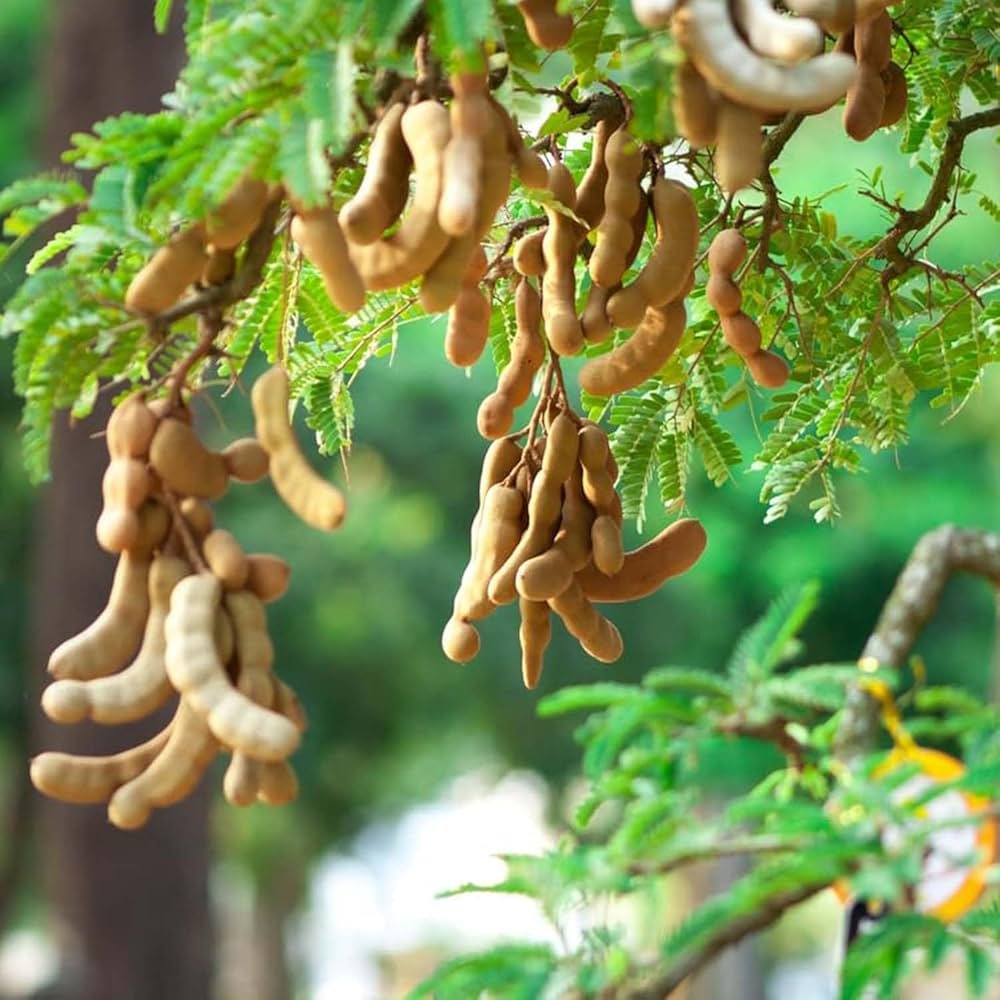
Tamarind seeds grow best in loose, well-draining soil rich in organic matter.
You can prepare your potting mix with:
- 1 part garden soil
- 1 part sand
- 1 part compost or coco peat
If you’re planting many seeds—like 100—it’s best to use seed trays, grow bags, or recycled containers (like plastic cups or bottles). Ensure each has small drainage holes at the bottom.
Fill each container with the soil mix and lightly moisten it before planting.
Step 3: Sowing the Seeds
Now comes the fun part—the actual planting!
- Plant each seed about 1 inch (2.5 cm) deep in the soil.
- Cover lightly and water gently.
- Place the containers in a warm, partially sunny area, ideally with temperatures between 25–35°C (77–95°F).
Tamarind seeds usually take 7–14 days to germinate, though some may take longer. You’ll see tiny green shoots pushing through the soil—a sign your project is thriving!
Step 4: Early Seedling Care
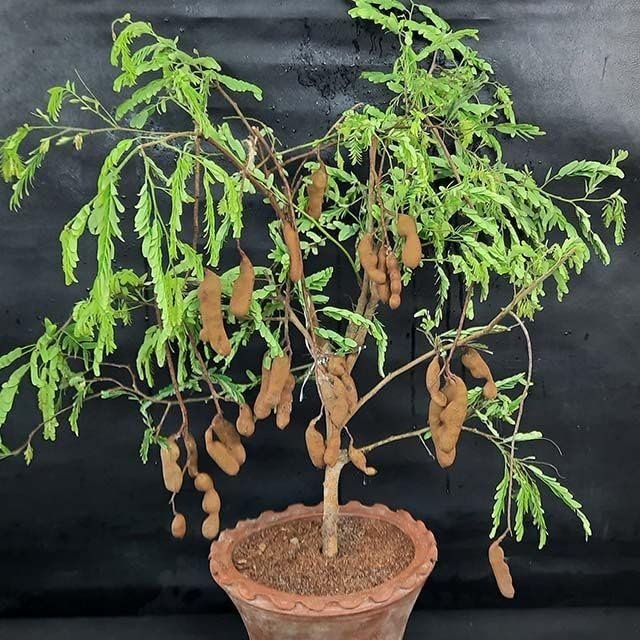
Once the seeds sprout, it’s time to nurture them into healthy saplings.
- Sunlight: Tamarind seedlings love light but should be protected from harsh afternoon sun for the first few weeks.
- Watering: Keep the soil moist but never soggy. Overwatering can cause root rot.
- Thinning: If several seedlings sprout too close together, thin them out so each plant has enough room to grow.
- Fertilizer: After 3–4 weeks, you can apply a mild organic fertilizer, like compost tea or a diluted seaweed solution, to encourage strong root development.
As your seedlings grow taller (around 15–20 cm), you’ll notice their delicate, feathery leaves beginning to spread.
Step 5: Transplanting Tamarind Saplings
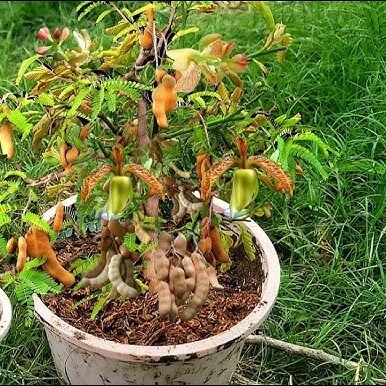
After about 2–3 months, your tamarind seedlings will be ready for transplanting into larger containers or directly into the ground.
Transplanting Steps:
- Choose a Sunny Spot: Tamarind trees love full sun, so pick a location that gets at least 6–8 hours of direct sunlight daily.
- Soil Preparation: Dig holes about 2 feet deep and wide, and mix in compost or well-rotted manure.
- Spacing: If planting multiple trees, space them at least 8–10 meters (25–30 feet) apart to allow for full canopy growth.
- Transplant Carefully: Gently remove each seedling from its container, keeping the soil around its roots intact.
- Water Deeply: After transplanting, water the plants thoroughly to help them settle into their new home.
Step 6: Long-Term Tamarind Tree Care
Growing tamarind trees is a long but rewarding journey. Here’s how to ensure they thrive over the years:
- Watering Schedule: Young trees need regular watering until they establish deep roots—about twice a week in dry weather. Mature trees can tolerate drought conditions.
- Fertilization: Feed the trees twice a year with compost, cow manure, or organic fertilizer to promote healthy growth and fruiting.
- Pruning: Prune dead or crossing branches to improve airflow and shape the tree. Tamarind naturally develops a beautiful umbrella shape with time.
- Pest Management: Tamarind trees are quite hardy, but occasionally, aphids or caterpillars may appear. Neem oil spray works as a natural remedy.
- Mulching: Applying mulch around the base helps retain moisture, suppress weeds, and improve soil quality.
Step 7: Patience and Harvest
Tamarind trees are slow growers, often taking 6–8 years to bear fruit when grown from seed. However, the wait is worth it—once mature, a single tree can produce hundreds of pods each year.
The pods are ready to harvest when they turn brown and brittle, and the pulp inside becomes sticky and tangy. The fruit can be eaten fresh, used in cooking, or made into sauces, candies, and drinks.
Turning a Gardening Project into a Family Bond
The most beautiful part of the “Planting Tamarind Tree from 100 Seeds” project isn’t just the greenery—it’s the togetherness it creates. Gardening as a family builds patience, responsibility, and teamwork.
Here’s how this project brings joy to everyone:
- Children Learn Patience: Watching seeds grow slowly into trees teaches kids that great things take time.
- Family Bonding Time: Watering, planting, and caring for saplings together makes for meaningful shared moments.
- Environmental Awareness: It encourages everyone to appreciate nature and take steps toward a greener planet.
- A Living Legacy: Those tamarind trees will stand tall for decades, symbolizing family love, effort, and unity.
Common Questions About Growing Tamarind Trees
1. Can I grow tamarind in pots permanently?
Yes, but only dwarf or bonsai varieties. Regular tamarind trees need space for roots to spread.
2. How long does tamarind take to germinate?
Usually 1–2 weeks with proper soaking and warm temperatures.
3. What’s the best fertilizer for tamarind?
Organic compost, manure, or a balanced NPK fertilizer (10-10-10) during the growing season works well.
4. Can I grow tamarind from store-bought fruit?
Yes! Just clean and dry the seeds before soaking and planting.
5. How often should I water tamarind seedlings?
Water every 2–3 days, keeping the soil lightly moist—not soggy.
Conclusion
Planting 100 tamarind seeds isn’t just about growing trees—it’s about planting hope, patience, and togetherness. With care, love, and persistence, these tiny seeds can transform into a lush grove, providing shade, beauty, and sweet-sour fruit for generations.
Whether you’re doing it as a school project, a backyard experiment, or a meaningful family activity, this project teaches one essential truth of gardening: from small seeds, great things grow.
So gather your seeds, roll up your sleeves, and start your own tamarind-growing journey today—one seed (or a hundred!) at a time.
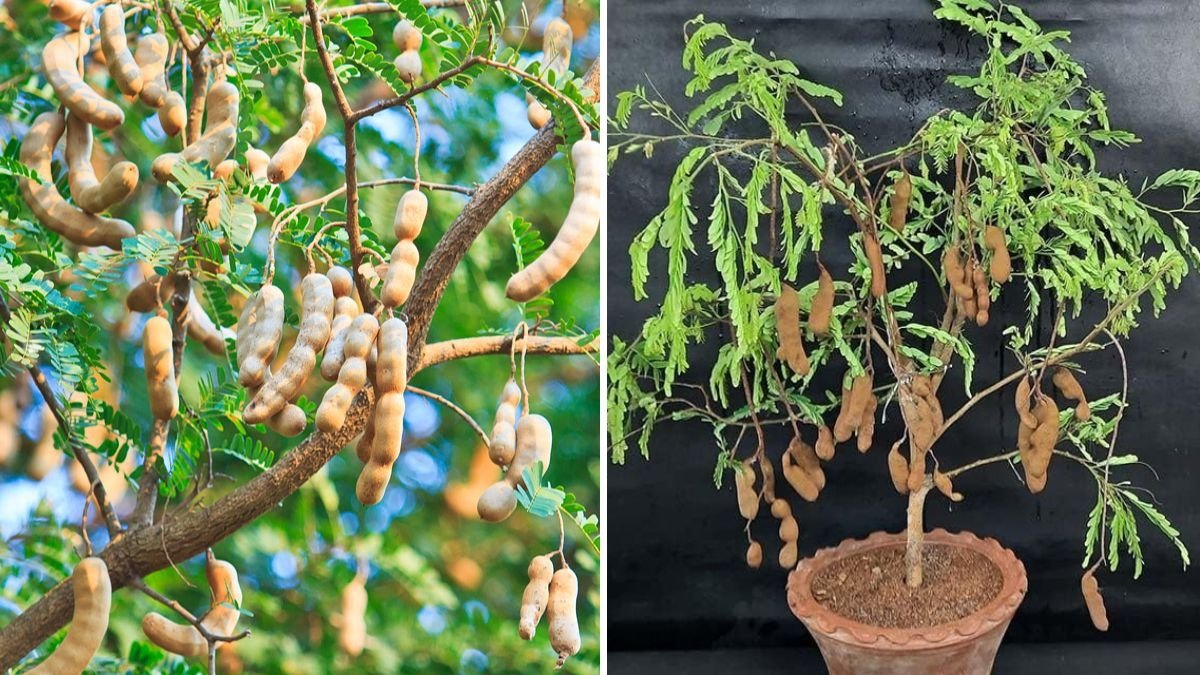





Leave A Comment